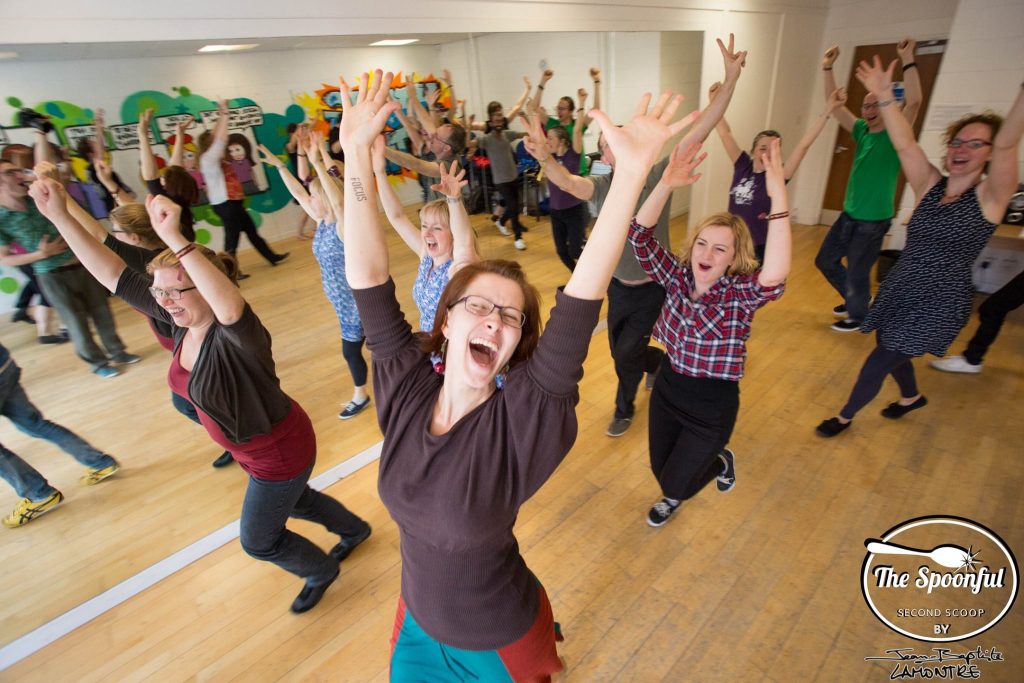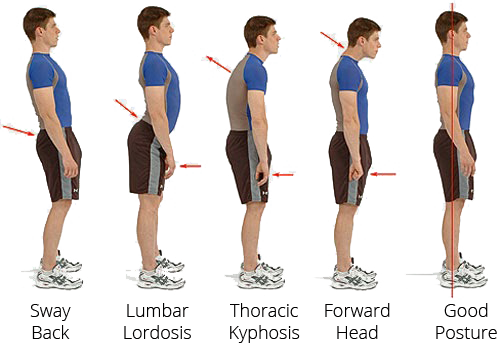When we talk about dancing, we come up with various subjects like social relations, fun, musicality, pulse, variations, spins, good or bad dancers, connection, leading, following… And from time to time, there is a person saying “dancing changed my way of holding myself and my confidence, made me think about my sensuality, improved my body and my health condition”.
Focused as we are to become better dancers, look for the best partners, or master the best looking variations, we usually forget that dancing is first a matter of bodies that communicate. A language without words, say some, that reveals some powerful things about ourselves.
My body, my confidence
As represented in the powerful comic strip – Dance Yourself Clean, by Lucy Bellwood – , dance can expose some serious issues we have with our own body (and especially women’s body), in a world where we have to somehow hide ourselves, where dancing (in a club) often rimes with “push away jerks”. Unless you were lucky enough to start social dancing very young, many of us had quite a negatique vision about dancing for years before discovering our passion.

Our relation with our body is very difficult in today’s world. We enter the dancing universe with a lot of complexes about our weight, our size, our age, our looks, our rhythm and our ability to dance…
Of course the dancing scene is not exempt of people who select partner on looks, or age… But in most cases, it is a perfect place to get rid of our complexes. With the proper partners and teachers, it is a excellent way to express and assert yourself, and claim your body and the dance floor as your own.

Have you ever been to Annette Kühnle’s solo blues workshops ? She will pull the « attitude » out of you. Here teaching together with Leigh Anderson (right behind her)
Like Lucy Bellwood says in her comic, “At these weekly dances and national exchanges I started to see women of all shapes and sizes throwing down. Flaunting their movement and their sexuality as a measure of skill. Being respected for their presence rather than their potential for conquest.”
I like the idea that people using the potential of their body to dance are not necessarily there to flirt, but just being themselves and let themselves go on the music. That it is possible to flirt and share an intimacy just for the time of a dance, in a benevolent atmosphere. Or when the music starts to groove, to just step up and dance with your whole beautiful body and soul.
Curtis and Elizabeth Performance, All Around the World by John Boutte. bluesSHOUT! 2014 bluesSHOUT
Your body is a tool for dancing
That confident body we have when we dance, we can use it as a fantastic tool for dancing. Once you decide to really work with it and use its full potential.
On a path to become better dancers, there is introspective work we can do on ourselves about our body.
- How is my posture ?
- How are my back, my arms, my abs ? What do I contract and when ?
- Do I just step or do I use my joints, my toes, my ankles to roll my foot and push on the floor ?
- Do I use my upper body to communicate with my partner ?
- Are my hips free ?
- Are my shoulders relaxed ?
- Do I breath normally ?
- …
My dance and personal background mean that I believe the dialogue goes from the hair to the tip of the toes.
Maria Filali
There seems to be thresholds where you gain new sensations which give you greater efficiency, comfort, connection, and a certain color.
Maria Filali
You’ll find a lot of workshops about these subjects in festivals, and I greatly recommend each one of them, because working on the mechanism of your own body will definitely make evolve your opinion of yourself and your dancing.
In contact with another body
In couple dancing you will use your body, energy and confidence, to build a dialogue without words with your partner. As we care about our body and we don’t want to end up at physiotherapy after each ball, our first concern should be to take care of our and our partner’s body.

There is still a strong stereotype amongst dancers of “the leader deciding and the passive follower executing”. Paradox is : the best dances are shared with both partners fully engaged in the process, listening to each other’s body and proposing variations together.
To do this properly, your posture and your frame has to be flawless and as comfortable as possible. People from tango have a word for it Abrazo, which mean Embrace in spanish.
Abrazo
A lot of dancers will tell you that a good abrazo is the most important thing you need in dancing. Not the number of variations you can do, nor dips or aerials. Connection is the key. Some dancers are so comfortable that you’re already “whoa” before the music starts. With a good abrazo, a leader can just make the basic steps again and again and again and we – followers – won’t mind. Because everything and a LOT happens inside the couple.
“If you lead, your frame has to be strong so the follower can understand you”, that’s one of the commonplaces beginners have in mind. To have a weak frame is not great, but if your frame is too strong, you can easily hurt your partner (like the guy who hurted my ribs for 10 days , thank you dude). In reality your frame has to be firm enough BUT flexible. I always have the picture of a dancing ninja in mind.
As we express ourselves without words, we have (there as well) an introspective work to do :
- How is my posture in the couple,
- Am I wholly dedicated to the transmission/reception of information between us (and don’t forget the room)
- Do i send extra indications with my body, like shaking arms and legs that can perturbate the dialogue ?
- Can I keep my axe when I move or when I do spins ?
- …

The best way to know this is to ask your teachers and your partners in class.
And because you and I love to watch videos on YouTube, here are more examples of beautiful connections.
In these examples you can see several good things :
- Leader and followers hold themselves straight, even if the partners are not the same height
- Each dancer is responsible for his own axis
- Shoulders are down and the line of connection between the leader and the follower is perfectly flexible
- Dancers are not stepping but shifting smoothly on the floor
- Hips and legs of dancers are free of movement, allowing them to add more bounce or variations when then want to
- They pay extra attention to their partner’s comfort when entering and leaving the embrace position
Being in contact with someone is not harmless
Sometimes we might feel uneasy for some reasons : the partner is too close, he grips you too tight… it is very important to tell people if they hurt you. Maybe s/he just doesn’t know about it and if you don’t say anything s/he will continue to hurt other partners, even with good intentions. Same thing if your back already hurt, you are not comfortable with dips or dancing in close embrace…, it’s YOUR body so you should say no to anything you don’t want.
I sometimes hear dancers say “I don’t like to dance with beginners/strangers because they hurt my body, they don’t hold themselves well and I have to compensate, to pull, to push… They grip on my shoulder and after a dance or two I feel physical pain”
For more informations I will refer you to that brilliant article that will list you many situations and how to indicate with your body that you are unwell. If it doesn’t work, just tell the person. If it still doesn’t work, tell organizers.
The (Mostly) Complete Guide to Dance Body Language ‘Hints”
The (Mostly) Complete Guide to Dance Body Language ‘Hints”, by Laura Riva / The Dancing Grapevine
http://www.danceplace.com/grapevine/the-mostly-complete-guide-to-dance-body-language-hints/
Beware of your physical limits
The more I dance, the more important it is to take care of my body. Who isn’t tired after a night of dancing ? Does your feet hurt ? Back ? Legs ? Shoulders maybe ? By dancing your body will become stronger but also more sensible to injuries like tendonitis, stress fracture, back and knees problems…
So we need to prepare and to limit potential damages, by learning how to warm up, stretch and rest, to recover from such contacts. An injury can mean months without dancing, with preparation, good shoes and good rest, we are able to protect ourselves a bit.
It is now current to lightly warm up and stretch in workshop and classes but surprisingly I see very few people do it in social dancing even if dancing is as demanding. Sometimes you will feel stared at when you stretch, but your back will say thank you the next morning.
What kind of exercises and how long should it take ?
Not many, not long, depend of your body of course. Wake your body up will help you relax and release the tensions after a long day of work, and prepare for the activity to come. I usually go from the head to the feet, gently, one exercise per part of the body.
Example for warm up
- Roll your head (slowly!)
- Make your shoulders roll
- Turn your upper body from one side to the other,
- Make 8 with your hips
- Bend your knees
- Shake your ankles
- Up on downs with the point of your feet
Example for stretching
- Stretching your feet
- Stretching your calf
- Bend down to stretch your spin
- Stretch your shoulders
- Yawn
For stretching I use basically the same order but with other exercises.
I found some really nice articles about how to stretch your feet after dancing or how to have a constructive rest.
Foot Stretches to Counteract High Heels
Foot Stretches to Counteract High Heels, on Goop
Dancers need to rest too
Dancers need to rest too, by Move Through Space
https://movingthroughspace.wordpress.com/2010/12/09/dancers-need-to-rest-too/
Dancing is an amazing way to be a master of your own body, to reconnect with yourself. It has physical and psychological effect on us, and that’s partly why we it feels so good to dance. You can work on it, challenge it, but the more important thing is to protect it.



